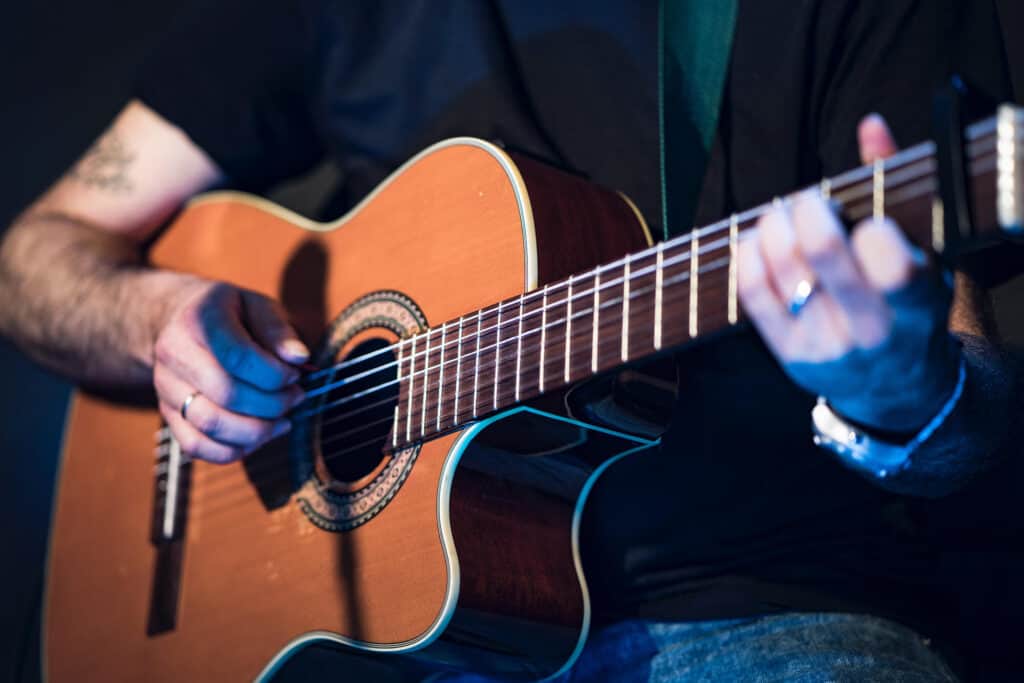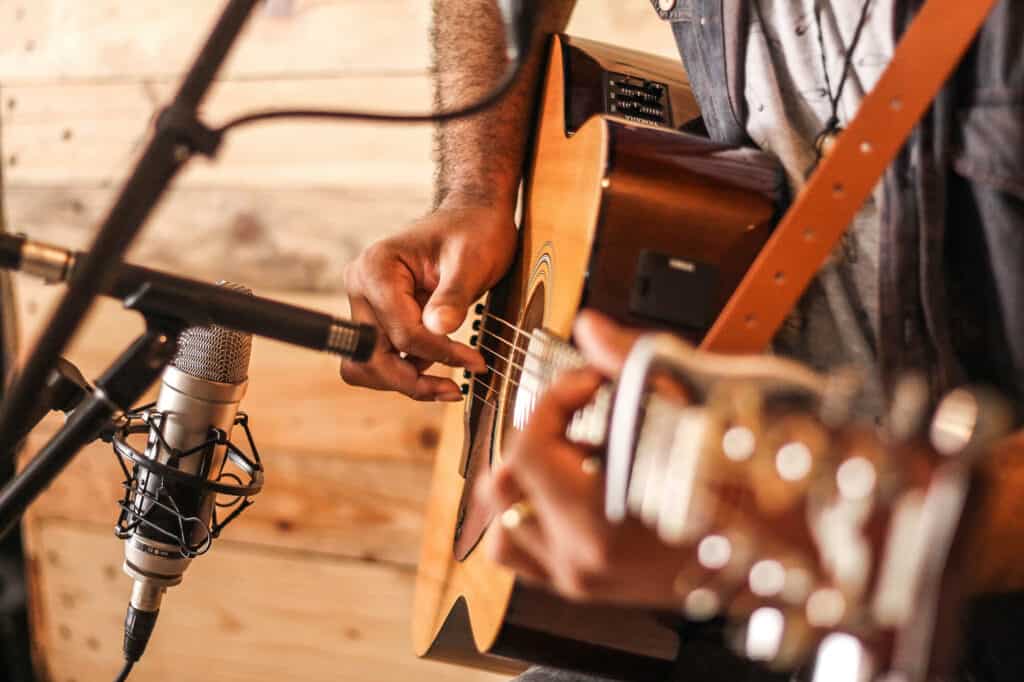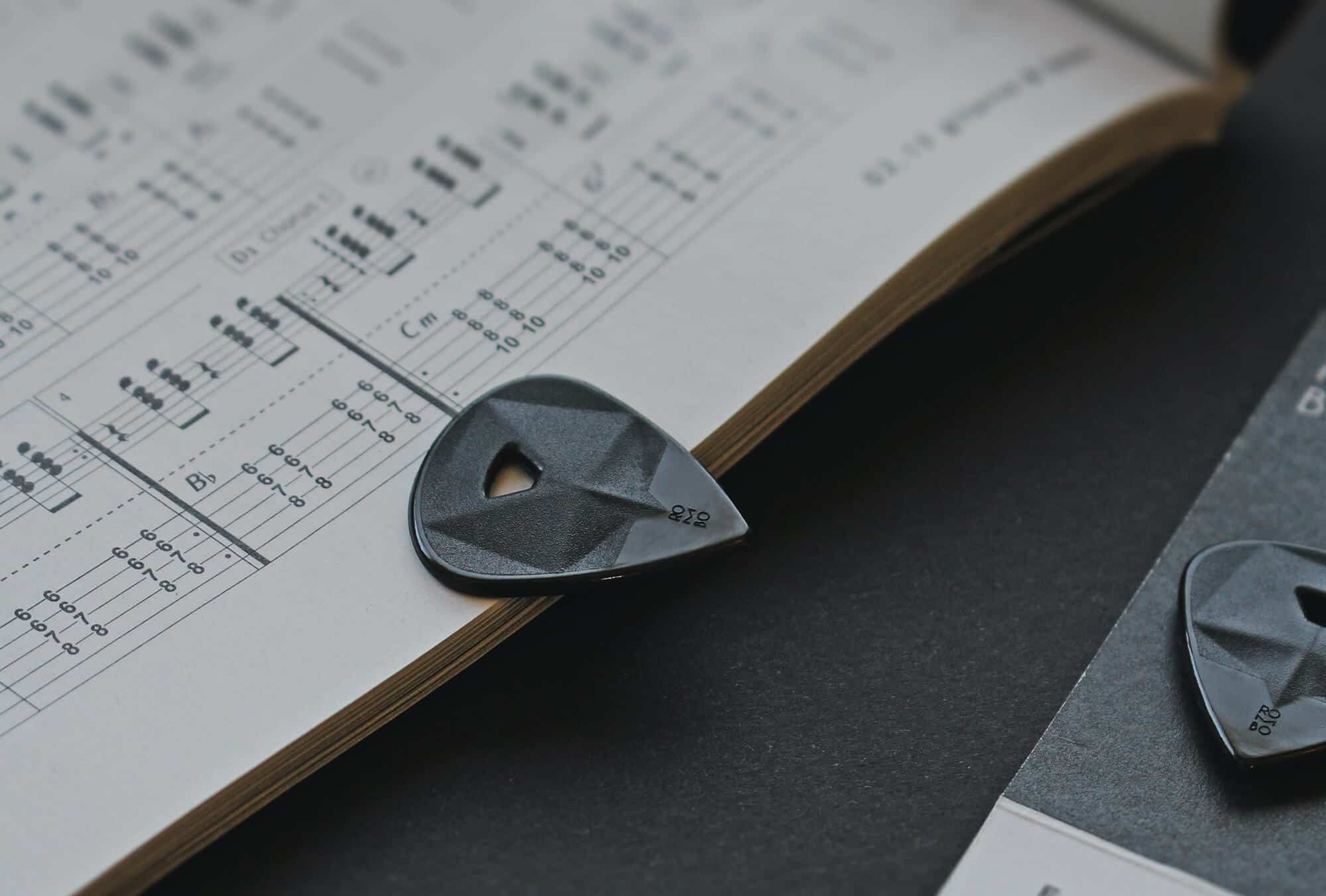Classical Guitar is not the same thing as an Acoustic Guitar but with nylon strings instead. Higher action, flat-radius fingerboard, wider string spacing, and most importantly, the softer nylon strings make it vastly different in terms of playability and technique.
But do you really need to grow fingernails to play it? Can you play classical guitar with a pick instead?
Classical Guitars are traditionally played using fingers or fingernails, but there is no harm in using a pick if that’s what you’re used to. Classical musicians or Flamenco guitarists might loathe me after reading that.
In this article, I’m going to talk about what you have to keep in mind when picking or strumming a classical guitar using a plectrum. I’ll also talk about the differences between acoustic fingerstyle and contemporary classical guitar.
How Do You Play Classical Guitar?

For someone used to other types of guitar, classical guitar might look peculiar and intimidating. There are a few differences in terms of finger technique and hand positioning.
Classical guitars are traditionally played as solo performances, and the guitarist plays both the melody and accompaniment. This is achieved using their fingers and thumb to play multiple strings separately and in conjunction.
You might have seen a classical guitar sitting in a peculiar position. It allows the guitarist to have proper hand positioning and posture, with their hand and wrist perpendicular to the strings.
Classical Guitar involves a lot of focus on the technique, and that’s what makes it one of the hardest guitar styles to master. Also, if you want to enjoy the endless repertoire of classical music, you also need to learn how to read music. No, not tabs, real sheet music!
Can You Use a Pick On a Classical Guitar?
Yes, of course. A lot of people use a pick on a classical guitar. It’s just that traditional players will never use a pick and always play with their fingers.
Nylon strings are much softer than steel strings and the attack is nothing like the latter, and pick makes them sound harsher than they’re meant to.
A better question would be – SHOULD You Use a Pick on a Classical Guitar?
The biggest difference in using a pick vs. fingers would be the possibility of scratching the soft tonewood on a classical guitar. A beginner may damage the finish of the guitar as classical guitars don’t usually come with a pickguard, although you can get it installed for dirt cheap.
We don’t recommend using a thumb pick as classical guitars already have a balanced tone and a thumb pick would make the bass strings too loud. We also suggest using a thinner pick for strumming nylon strings or you’ll wear the strings out. A pick might be desired if you want to play the guitar in a ‘mandolin style’.
When it comes to classical music, you would never require to use a pick as it will pretty much always require you to use fingers and thumb. It is, however, acceptable to use a pick when playing pop songs or just chords and lead lines. There are also players that use a pick together with their fingers in a hybrid style.
Pros of Using a Pick on Classical Guitar
Using a pick on classical guitar can have some benefits, such as:
- It boosts your volume and clarity: A pick can strike the strings harder and faster, making your sound louder and crisper. It can also reduce the friction between the strings and the pick, making your tone brighter and cleaner. This can suit some genres and styles of music.
- It simplifies your technique and comfort: A pick can use only one hand to play the notes, making your technique easier and simpler. It can also be more comfortable for you if you’re used to playing with a pick on other guitars.
- It increases your speed and accuracy: A pick can alternate up and down strokes, making your picking faster and more efficient. It can also give you more control and stability over the pick, making your picking more precise and consistent. You can avoid mistakes and errors.
- Alternative to some of the hardest classical guitar techniques: A pick can also enable different techniques and expressions that are extremely hard to do with your fingers or nails, like strumming, tremolo picking, sweep picking, pinch harmonics, etc. These techniques and expressions can enhance your classical guitar playing and let you explore new musical possibilities.
Cons of Using a Pick on Classical Guitar
Using a pick on classical guitar can also have some drawbacks, such as:
- It can damage the finish of the guitar. A pick can hit the surface of the guitar when you strum, scratching or denting the finish. This can affect the appearance and durability of the guitar. Classical guitars do not have a pickguard to protect the finish, unlike steel string or electric guitars, although you can install one separately.
- It can limit your expression and dynamics. A pick can make it harder to control the volume and tone of each note or string. It can also make it harder to play with nuance and emotion. Fingers or fingernails can provide more expression and dynamics by varying the pressure, angle, and position of the plucking device.
- It can make it harder to play some traditional techniques or patterns. A pick can make it difficult or impossible to play some classical guitar techniques or patterns that require multiple fingers or thumb. For example, arpeggios, rasgueado, tremolo, etc. These techniques or patterns are essential for playing classical guitar music authentically and originally.
- It can deviate from the authentic and original sound and style of classical guitar music. A pick can change the sound and style of classical guitar music by making it louder, brighter, and sharper than it was intended to be. It can also lose some of the warmth, softness, and richness that fingers or fingernails can produce. A pick can make classical guitar music sound less natural and more artificial.
In the end, there is nothing sacrilegious in using a pick!
Willie Nelson, John McLaughlin, and Yngwie Malmsteen are some of the most famous examples of people who play classical guitar with a pick. However, if you really want to get serious with classical guitar, you should consider giving up on the pick.
What is The Difference Between Classical And Fingerstyle Guitar?

In the world of guitar, fingerstyle refers to the technique of using your thumb and fingers to play the guitar. It can be on an acoustic guitar, classical, or even electric guitar. But you probably already know that a classical guitar is traditionally played with fingers. So what’s the difference?
Well, if you ask me, the difference lies in the stereotype. We generally refer to ‘fingerstyle guitarists’ as the players who use the technique to play melody, lead lines and chords together on a steel-string acoustic guitar. They sometimes choose alternate tunings and make acoustic guitar arrangements for all types of music.
The term ‘Classical guitar’ refers to playing the music all the way from classical period to modern periods on a classical ‘nylon-string’ guitar. Technically, classical guitarists use fingerstyle, however, they don’t like to call it that as it’s always played with fingers. So, the key differences are the choice of music itself and playing techniques.
There is also a subtle difference between the terms ‘fingerstyle’ and ‘fingerpicking’. However, it’s more of a jargon than a different playing style. While fingerpicking simply means picking with your fingers, fingerstyle encompasses using your fingers and thumbs to build a technique and use them in conjunction in songs. Some fingerstyle players also use a thumb pick instead.
Conclusion
While we believe that pick and classical guitar don’t go hand-in-hand, you can certainly use one if you’re not used to playing with fingers at all. You would limit yourself from getting the beautiful harmonies and the warm and balanced sound out of your classical guitar.
Switching to fingerstyle will allow you to be more creative and blend chords, melodies and even percussive techniques in the case of Flamenco. The choice is yours and in case you choose the pick, just don’t forget to invest in a pickguard.

I’m Pranshu. I’ve been a passionate guitarist, keyboardist, and music producer ever since I got my hands on a keyboard as a small child.
With Harmonyvine, my goal is to share tips and knowledge about music and gear with you. I also enjoy recording music and guitar covers, which you can check out on my Instagram page.

